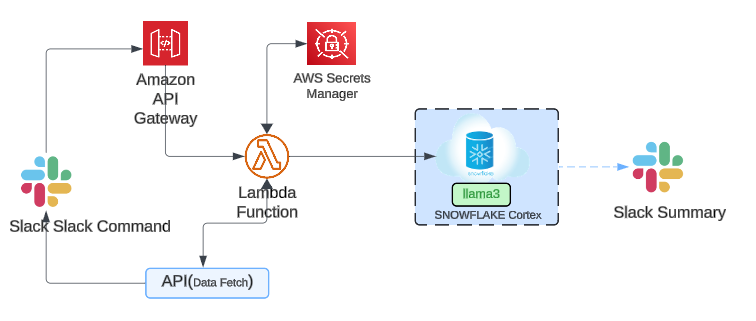Introduction: – Many Clients have implemented SAC before the new Model was Introduced.
To benefit from the new functionalities, they would like to migrate the same.
Why we Migrate?
To benefit from the extended functionality of the new model this migration is recommended, although not mandatory.
Right now, classic model is still in use specifically for financial projects very heavily used.
The old model is not deprecated but SAP is recommending it to migrate (if possible), and any new model to create in the new model type to benefit from its extended functionality.
What are those extended functionality?
Extended functionality are basically calculations.
In the classic account model, we do cannot do lot of complex calculated measures, but in the new model we have a section for currency conversion, unit conversion and complex calculated measures. This is one extended functionality.
Extended Functionality
The New Model type also refers as model with measures, offers much more possibilities and flexibility than a classic account-based model, allowing you to integrate both an account and multiple measures in a single model.
How to Convert them?
To benefit from the extended functionalities, you can convert classic account model into a new model type using the button Migrate to New Model Type in the modelling area.
How to Convert
With Just one button click we will be able to do the migration.
This is Irreversible, once migrated to new model you cannot go back to the classic account model.
Model Migrated Successfully
Once the Migration is done, we will see the below message “Model Migrated Successfully”.
Restrictions:
There are some restrictions: –
Migration is not possible if the classic account models have dependent objects. Meaning if it has a story on top classic model or data action on top of that or if it has analytic application using the model. SAP is currently working on it and its in in the pipeline to remove this dependency.If the currency conversion is enabled, we cannot do migration. We need to turn off the currency conversion before the Migration and turn it on again after the migration and then redefine the currency conversion measure in target model.If you have an import job and export job connected to the model, then it is not compatible with the new model. [Old import and export job will not be functional/Operational in new model. we can see the job, but we cannot trigger. Because the old import job type is not compatible with the new model. We can still see the history of the old job but cannot trigger anymore. So, after migration a new import/export job needs to be created.Data-Point comments are not migrated. They are not supported yet [may be in upcoming future releases.].If you have classic account model used in SAC add in for Microsoft excel, you need to re-insert that model into an existing workbook created with the add in.
Migrating Analytics Classic Model to new Analytic New (Measure based) Model
Testing Scenario: -Creating an import job and will check if this works after Migration.
Model – Before Migration
Import Job
Import Job
Also, there is no dependent objects so we will be able to migrate this.
No Dependent Object
Actual Migration
Migration Successfully
The Model is Migrated.
After the migration, the new Model type is Measure.
New Model Type – Measure
and now it can have Multiple measures and Calculation Measure.
New Model – Post Migration
After the migration the Import job is not compatible with the new model. [Testing Scenario mentioned above].
Import Job – Non Compatible
Similarly, we can test when there is a Story present on top of the Model.
when trying to migration classic model with Story on top it will not allow to migrate.
Dependent Object – Story
Migration not Possible
Summary
Flow – Diagram Summary
The migration is not possible if your classic account model has dependent objects or if the currency conversion is turned on. If your classic account model has currency conversion enabled, you need to turn it off before migrating the model. The new model is created with the currency conversion turned off. Then it’s up to you to turn it on again and redefine the currency conversion measures in your target model. The migration cannot be undone. The new model type’s data import/export job is not compatible with the old import/data import job for a classic account model. Therefore, there is no migration from old job type to new job type. Job scheduling based on future execution no longer exist,
but previous job execution history can still be observed. So, after the conversion, you will have to create new data import/export job for the new model type. If the Microsoft Excel Add-in is used for SAC, the model has to be re-inserted in the excel Add-in.
References
https://help.sap.com/docs/SAP_ANALYTICS_CLOUD/00f68c2e08b941f081002fd3691d86a7/70913db112d44591a28514544871692f.html
https://www.bix-consulting.com/en/hands-on-mit-dem-neuen-modell-auf-der-sap-analytics-cloud/
Introduction: – Many Clients have implemented SAC before the new Model was Introduced.To benefit from the new functionalities, they would like to migrate the same.Why we Migrate?To benefit from the extended functionality of the new model this migration is recommended, although not mandatory.Right now, classic model is still in use specifically for financial projects very heavily used.The old model is not deprecated but SAP is recommending it to migrate (if possible), and any new model to create in the new model type to benefit from its extended functionality.What are those extended functionality?Extended functionality are basically calculations.In the classic account model, we do cannot do lot of complex calculated measures, but in the new model we have a section for currency conversion, unit conversion and complex calculated measures. This is one extended functionality.Extended FunctionalityThe New Model type also refers as model with measures, offers much more possibilities and flexibility than a classic account-based model, allowing you to integrate both an account and multiple measures in a single model. How to Convert them?To benefit from the extended functionalities, you can convert classic account model into a new model type using the button Migrate to New Model Type in the modelling area.How to ConvertWith Just one button click we will be able to do the migration.This is Irreversible, once migrated to new model you cannot go back to the classic account model.Model Migrated SuccessfullyOnce the Migration is done, we will see the below message “Model Migrated Successfully”. Restrictions:There are some restrictions: -Migration is not possible if the classic account models have dependent objects. Meaning if it has a story on top classic model or data action on top of that or if it has analytic application using the model. SAP is currently working on it and its in in the pipeline to remove this dependency.If the currency conversion is enabled, we cannot do migration. We need to turn off the currency conversion before the Migration and turn it on again after the migration and then redefine the currency conversion measure in target model.If you have an import job and export job connected to the model, then it is not compatible with the new model. [Old import and export job will not be functional/Operational in new model. we can see the job, but we cannot trigger. Because the old import job type is not compatible with the new model. We can still see the history of the old job but cannot trigger anymore. So, after migration a new import/export job needs to be created.Data-Point comments are not migrated. They are not supported yet [may be in upcoming future releases.].If you have classic account model used in SAC add in for Microsoft excel, you need to re-insert that model into an existing workbook created with the add in. Migrating Analytics Classic Model to new Analytic New (Measure based) ModelTesting Scenario: -Creating an import job and will check if this works after Migration.Model – Before MigrationImport JobImport JobAlso, there is no dependent objects so we will be able to migrate this.No Dependent ObjectActual MigrationMigration SuccessfullyThe Model is Migrated.After the migration, the new Model type is Measure.New Model Type – Measureand now it can have Multiple measures and Calculation Measure.New Model – Post MigrationAfter the migration the Import job is not compatible with the new model. [Testing Scenario mentioned above].Import Job – Non CompatibleSimilarly, we can test when there is a Story present on top of the Model. when trying to migration classic model with Story on top it will not allow to migrate.Dependent Object – StoryMigration not PossibleSummaryFlow – Diagram SummaryThe migration is not possible if your classic account model has dependent objects or if the currency conversion is turned on. If your classic account model has currency conversion enabled, you need to turn it off before migrating the model. The new model is created with the currency conversion turned off. Then it’s up to you to turn it on again and redefine the currency conversion measures in your target model. The migration cannot be undone. The new model type’s data import/export job is not compatible with the old import/data import job for a classic account model. Therefore, there is no migration from old job type to new job type. Job scheduling based on future execution no longer exist, but previous job execution history can still be observed. So, after the conversion, you will have to create new data import/export job for the new model type. If the Microsoft Excel Add-in is used for SAC, the model has to be re-inserted in the excel Add-in. Referenceshttps://help.sap.com/docs/SAP_ANALYTICS_CLOUD/00f68c2e08b941f081002fd3691d86a7/70913db112d44591a28514544871692f.htmlhttps://www.bix-consulting.com/en/hands-on-mit-dem-neuen-modell-auf-der-sap-analytics-cloud/ Read More Technology Blogs by Members articles
#SAP
#SAPTechnologyblog

















